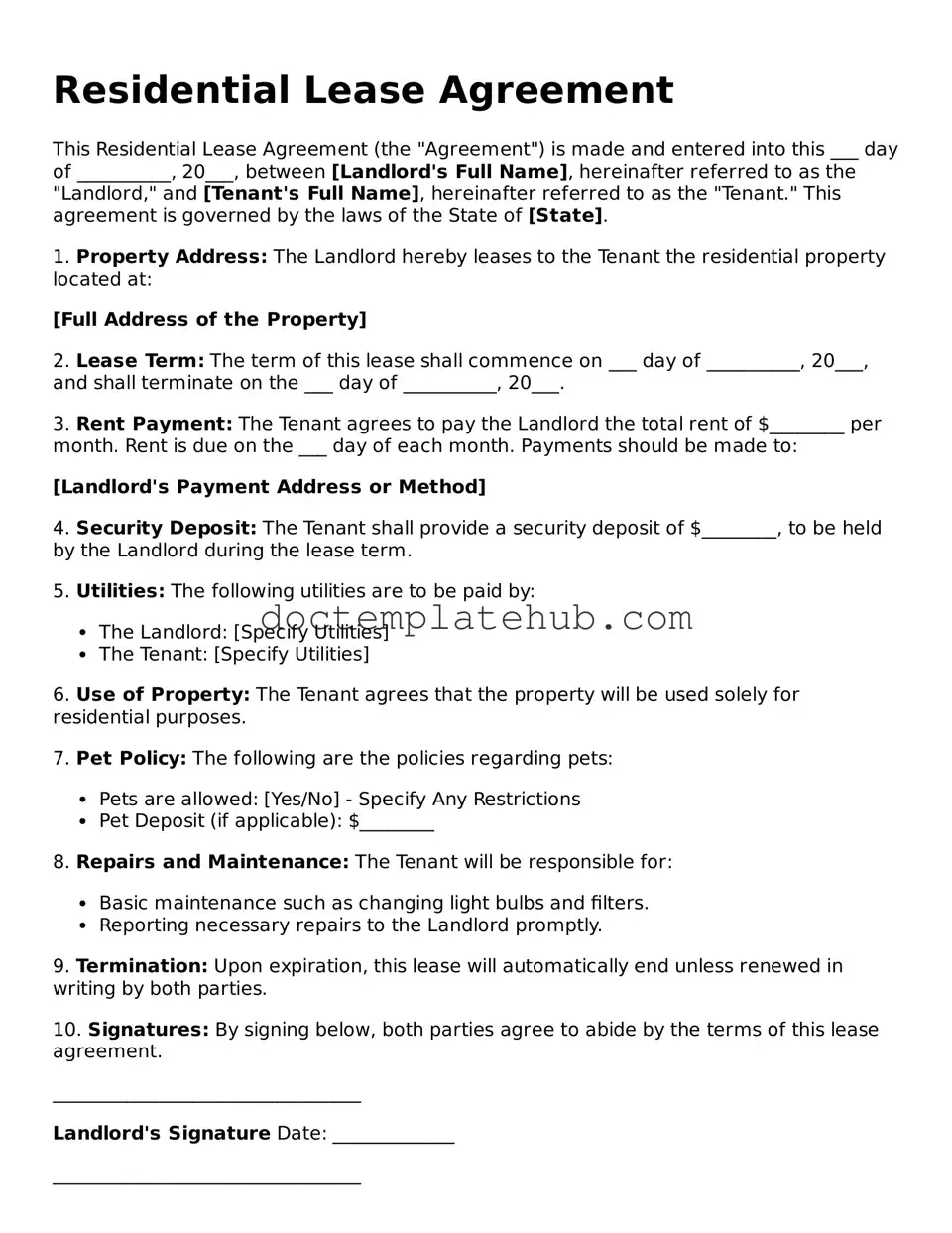What is a Lease Agreement?
A Lease Agreement is a legal document that outlines the terms and conditions under which one party agrees to rent property owned by another party. This document typically includes details such as the duration of the lease, the amount of rent, payment due dates, and the responsibilities of both the landlord and tenant. It serves to protect the rights of both parties and provides a clear framework for the rental relationship.
What should be included in a Lease Agreement?
A comprehensive Lease Agreement should include several key components. First, it should specify the names of the landlord and tenant. Next, it should detail the property address and the duration of the lease. Rent amount and payment terms are crucial, as are security deposit requirements. Additionally, the agreement should outline maintenance responsibilities, rules regarding pets, and conditions for terminating the lease. Clarity on these points helps prevent misunderstandings in the future.
Can a Lease Agreement be modified?
Yes, a Lease Agreement can be modified, but both parties must agree to the changes. Modifications should be documented in writing and signed by both the landlord and tenant. This ensures that any alterations are legally binding and helps avoid disputes later on. It's important to keep a copy of the modified agreement for reference.
What happens if one party violates the Lease Agreement?
If either the landlord or tenant violates the Lease Agreement, the other party may have legal grounds to take action. Common violations include failure to pay rent, unauthorized occupants, or not maintaining the property. The affected party can typically issue a notice to the violator, allowing them a certain period to correct the issue. If the violation is not resolved, legal action may be necessary, which could include eviction for tenants or damages for landlords.
